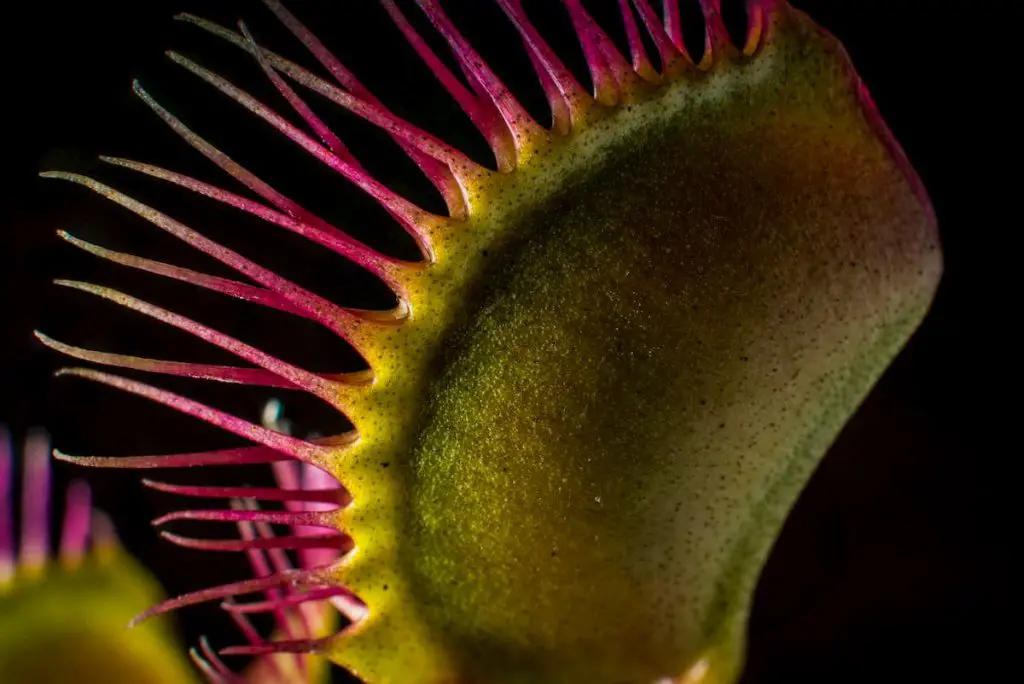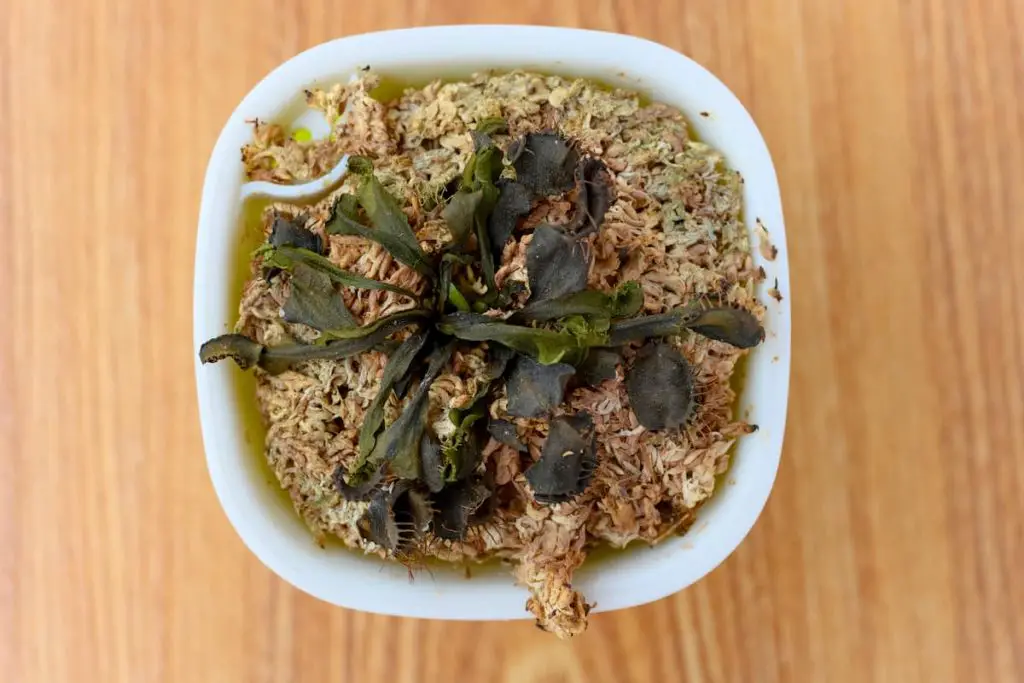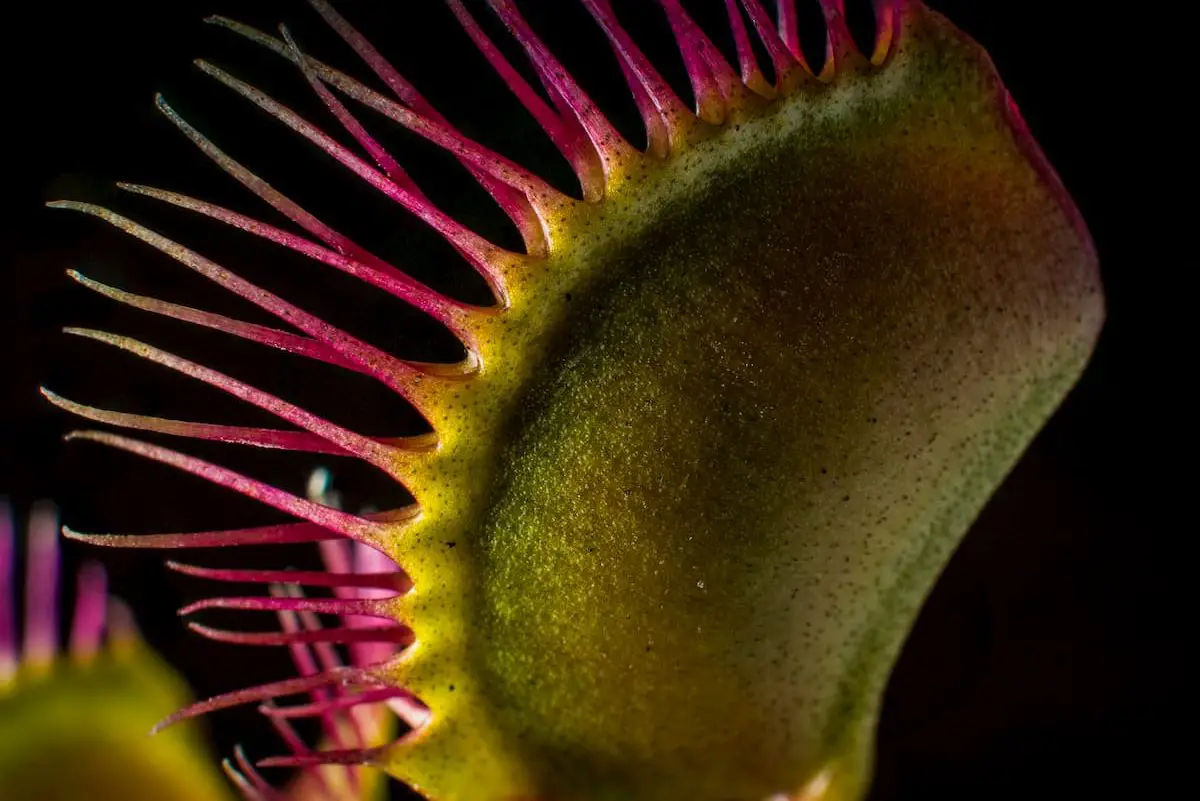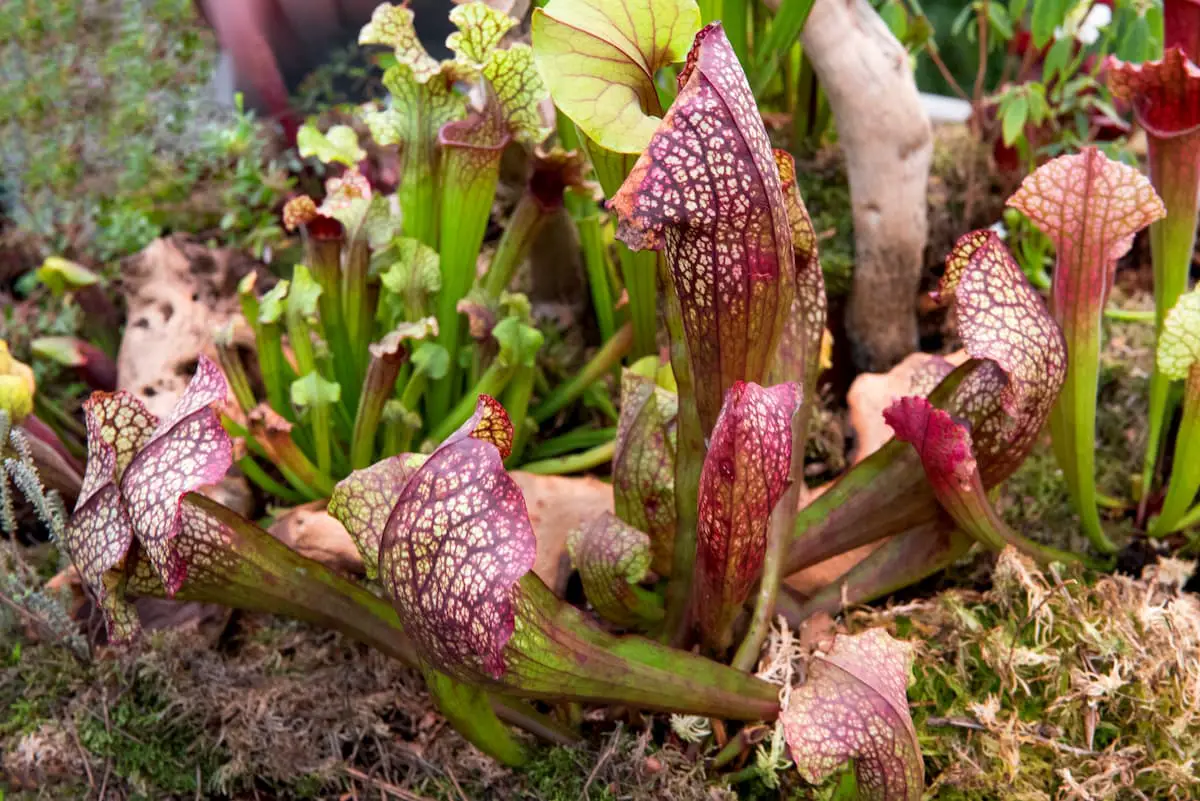Venus Flytraps are perhaps the best known species of carnivorous plant, but media portrayals of them can be misleading. After doing my research on the subject, I found there’s a lot more to consider about proper Flytrap care than what you feed it.
How long can a Venus Flytrap (VFT) survive without food? The answer may be indefinitely. Like any other plant, VFTs only need sunlight, soil, and water to survive, so that they can perform photosynthesis and create nutrients to help them grow. Insects are just an additional source of nutrients, but not required for them to live.
Feeding your Flytrap can help it to thrive, but it’s less important than making sure you give it the sunlight, soil, and water that it needs to grow properly.
Sometimes Venus Flytraps come in pots that are bad for them – either too small or made with the wrong material. Here’s what you need to know about caring for your Flytrap.
Feeding Your Flytrap
If your flytrap is outdoors, it will have no trouble catching enough insect prey on its own. If it is an indoor plant, make sure only to feed it something that it would be able to catch naturally, no people food.
Additionally you want to only feed it things that are up to one third the size of the plant. Anything bigger than that might be hard for the plant to “digest” and cause your plant to die.
Some things you could feed your plant include small worms, crickets, fruit flies, etcetera. You can feed them dried (dead) insects, but you may have to “tickle” the outside feelers to let them know they’ve “caught” something.
It may take weeks for your VFT to digest their prey.
Where to Keep Your Flytrap
This may seem obvious, but like any other plant, your VFT needs sunlight in order to perform photosynthesis. They are hardy plants and grow well in greenhouses or on windowsills.
They are native to South and North Carolina and as such are used to temperatures as high as 86℉ and as low as 32℃, meaning they can survive in literally freezing climates but also in warm, humid ones, meaning keeping it indoors at room temperature should not be a problem.
Between November and February, VFTs go dormant for the winter. During dormancy, a Venus Flytrap can go without light completely. Your Flytrap’s leaves will turn black and your plant will die.
It’s okay to cut away the leaves as they die. The plant will die all the way to what is called the rhizome (bulb), which is underground. It will grow back in March. In spring, a healthy plant will flower.
If you already live in a Carolina-like climate, it may be fine to keep your plant outdoors and let it enter dormancy naturally. Otherwise, some people refrigerate their plants for the winter.
This is not recommended except as a last resort – keeping it somewhere naturally more cool like a basement or garage is preferred.
Water and Soil
An adult Venus Flytrap needs a pot of about 4 inches (10 cm) in order to have room to grow. It’s best to give them “pure water” – like rainwater or distilled water – rather than tap or bottled water.
This is due to the ability to cause a buildup of minerals that could be enough to kill your VFT. It’s best to get the soil moist all the way through but not to overly waterlog the plant.
During dormancy, the water needs of a Venus Flytrap changes. Be careful not to overwater your plant during this time, because if the plant remains wet for too long, it may start to rot or grow mold. It should be kept damp, (not fully wet), but never completely dry, either.
For soil, some sources recommend soil that’s 1 part peat moss and 1 part perlite or sand. Be careful not to use standard potting soil, fertilizer, or compost, because these may contain too many minerals and kill your plant.
Do not use clay pots for this reason, and instead use plastic or glazed ceramic pots.

What to Do If Your Venus Flytrap Starts Dying
What should you do if your plant starts dying before it’s due for dormancy? Check your feeding practices and growing conditions. If you correct the problem in time, you might be able to save the plant.
If your plant catches a bug that’s too big, it may have difficulty forming a seal that will allow it to digest their prey completely. If this happens, just leave the bug in place, and while that particular trap will die, the rest of the plant should survive.

Potential Predators That Consume Venus Flytraps
Potential predators of Venus Flytraps include squirrels, raccoons, and bluejays, as well as some smaller creatures like aphids or spider mites.
Rodents do not generally like the scents of mint or strong herbs, so if you are keeping your Venus Flytrap and other plants outdoors and you are having a problem with these pests, you may benefit from planting mint, basil, garlic, and thyme in a border around your garden.
This will cause many predators to think your garden has nothing to offer them and for them to give up and go away.
It’s fairly easy for you to kill aphids and spider mites with a simple soapy water mixture. Just mix a few teaspoons of liquid dish soap and one quart of water.
You can then spray the leaves of your plant or wipe them with the solution. It should not harm your plants, but it will kill the aphids, spider mites, and other similar plant-consuming insects.
Why doesn’t my plant have the same bright red coloration on the traps I see in photos online? In order to achieve that coloration, VFTs need access to an abundance of direct sunlight.
In less desirable conditions, they will simply be lime green, or have just a few red spots. With even less sunlight, they may turn black and die.
Why do I see a white fuzzy mold on my plant? That mold is called a saprophyte. It exists to eat dead matter. If you only see a little bit of mold, or if it’s confined to just one leaf, there’s not much to worry about.
If it is devouring your whole plant, it means you’re not paying enough attention to your Flytrap or something has gone wrong in how you are growing it, and the whole plant is dying.
What will happen if a Venus Flytrap bites me or my pets? Nothing much. As previously mentioned, VFT cannot digest larger prey, including humans, cats, dogs, even mice. If you decide to poke the trap for some reason, it will close, but it should not hurt.
What will happen if my pet decides to try to eat a Venus Flytrap? Venus Flytraps might be among the plants that are potentially poisonous to cats and/or dogs.
However, if the cats or dogs showed any symptoms at all, they were usually mild gastrointestinal issues.
The same source says they know of an instance of two cats who died after eating Venus Flytraps, but they’re not sure of a causal connection there – in other words, it’s unclear if they died from eating the Flytraps or from other causes.
Where Can I Buy a Venus Flytrap? Somewhere like Lowe’s or Home Depot might have them – even Walmart. You can also check places like your local botanical gardens, if they sell plants and seeds there.
You may not find VFTs at your local flower shop, but garden stores are a good bet. You can also try buying them online.
Final Thoughts on How Long Can a Venus Fly Trap Live Without Food
Venus Fly Traps are pretty hardy and can survive many stressors that could take out lesser plants. What you want to do is just treat them properly and make sure to keep them out of freezing cold.
Feeding them if inside every month or so will help them to continue to grow and get stronger and make sure not to overfeed them or stimulate them to close without food so they dont waste energy!



Leave a Reply